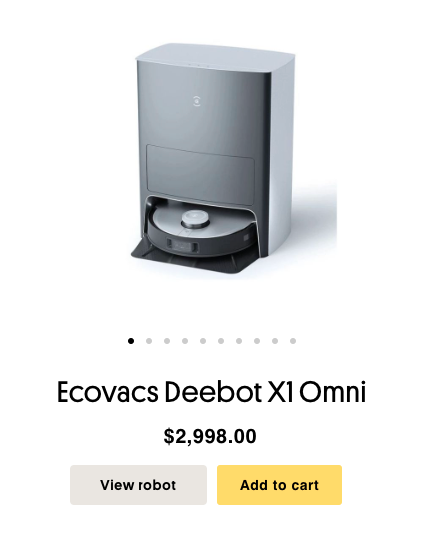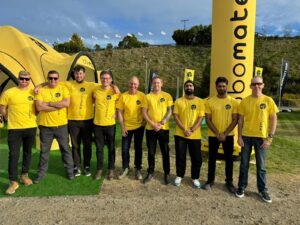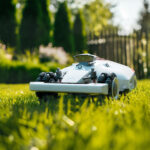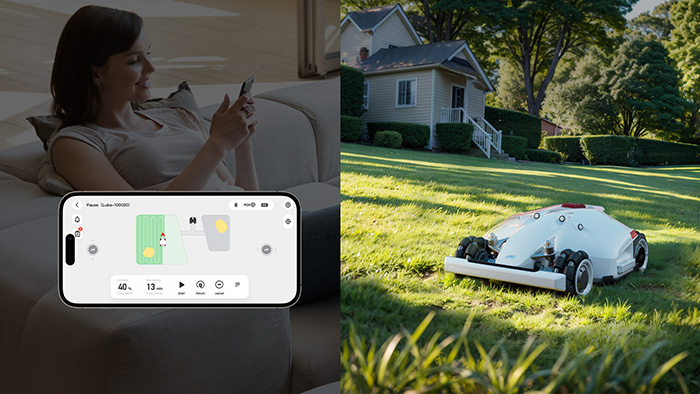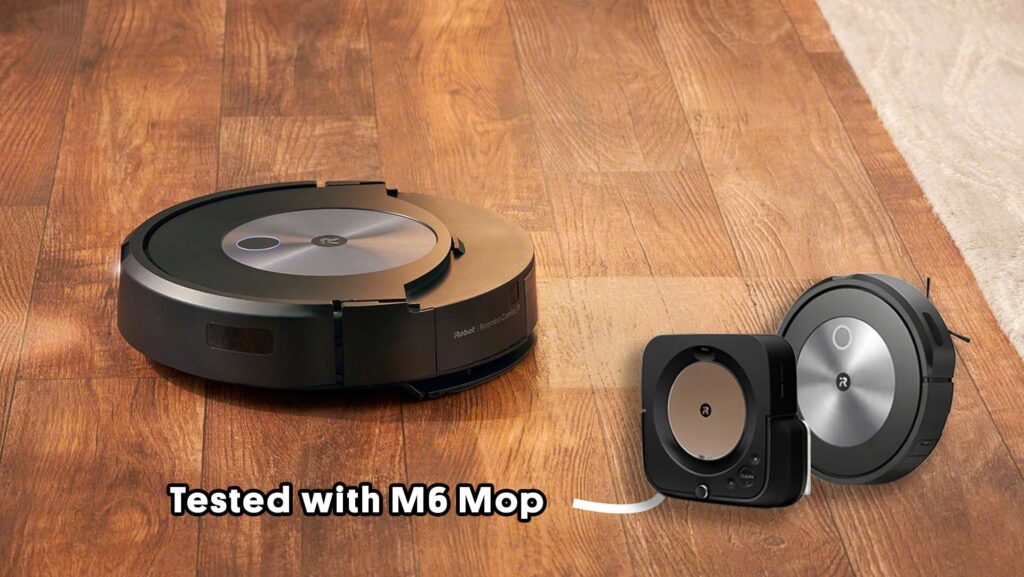Whatever was in the air in 2022 has fuelled the latest innovation clash of the robot titians – Ecovacs and Roborock. Even in 2021, the addition of the auto-empty station was an impressive feat (we finally didn’t have to touch the dirt and debris from the dustbin). One year on, hands-free cleaning has taken on a new meaning. Ecoavcs have given us the Deebot X1 Omni with the self-cleaning Omni Station and Roborock have responded with the S7 MaxV and the Empty Wash Fill Dock.
Once again it’s difficult to really determine which robot is best for you and why. We have tested, lived with, and learned to love both robots and cleaning stations. This is our expert opinion.
On paper, there are a number of similarities. Both are circular, hybrid vac+mop combos that use LiDAR as their primary navigation sensor. They also both use obstacle avoidance AI to reference a library of images in order to identify and detect objects that come across it’s path. They both have “active” mopping attachments, where the mopping pads moving to create extra friction rather than just being dragged around the floor.
There are a couple of distinct differences that might make you favour one robot over the other – so let’s just focus on the differences. Features can often be more confusing than helpful, so we have summarised and highlighted the key features that should form the basis of your actual decision at the bottom.


1. Asthetic
Ok obviously life’s not all about looks… but looking at the robots side by side, I personally feel the X1 Omni would definitely look a bit nicer sitting in my kitchen. The aluminium brush finish and the dual-toned grey just looks a little classier. However, the Roborock definitely looks like it means business, and when it comes to its hardware and cleaning performance, it does exactly that.
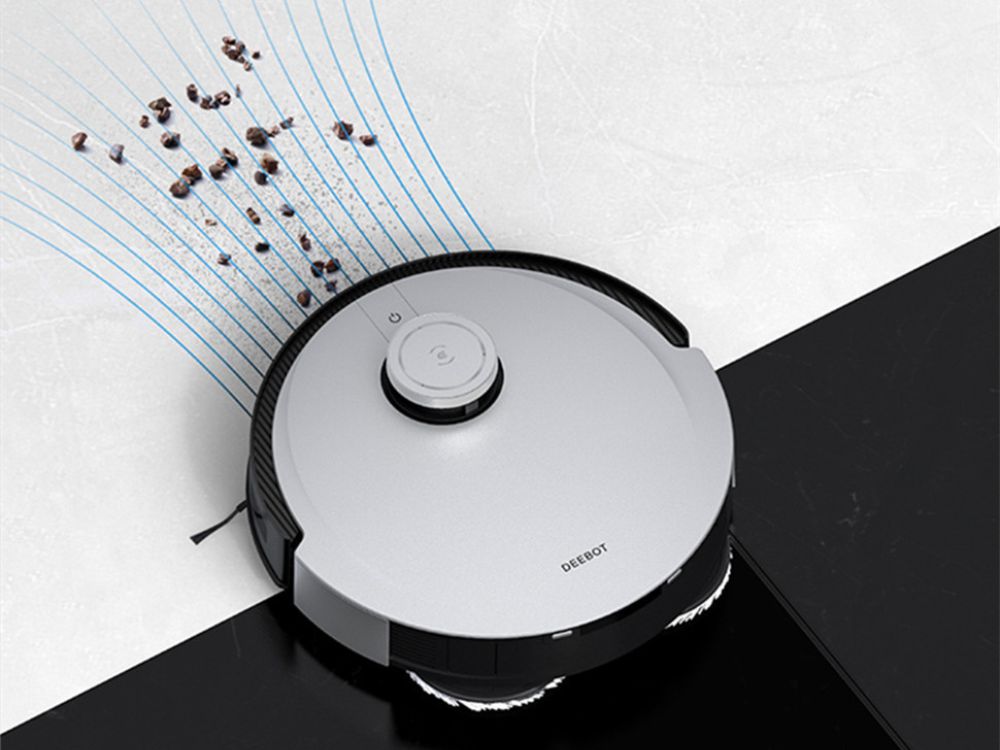
2. Vacuuming performance
Only last year, we were impressed by 3,000 pa of suction on a robot vacuum and yet these models well surpass even that impressive figure. The X1 gives us a whopping 5,000 pascals of suction power and the S7 MaxV slightly tops it with 5,100pa. The S7 MaxV is considered more efficient as well, as it’s main brush is lower and follows the contours of the floor, creating a better seal. This slight difference simply gives advantages to both approaches: the X1 is a little better at picking up larger objects and collecting hair around it’s bristled brush but the S7 MaxV is better at finding debris in crevices. Personally, I wouldn’t make a decision between these two bots based on the vacuuming performance as there’s not much to separate them and both do exceptionally well at genuine deep-cleaning.
3.The Charging Docks
The Omni Station and the Empty Wash Fill Dock have taken “hands free cleaning” to an entirely new level. Both stations let the robot dock, empty its dustbin and wash it’s mopping pads. Both have a “clean water” tank and a “dirty water” tank . The idea is that you fill up the clean water tank as and when necessary and the water that is washed through the mopping pads is filtered into the dirty tank – which you would be wise to empty more often that not (we can confirm if left for a while it will really start to stagnate).
The X1 Omni has a blow drying feature that will actually dry the mopping pads as they sit on the dock – it’s arguable how helpful this is, as both stations will electronically moisten the mop pads with water before they’re sent on a mopping run, but if you don’t want a wet mopping pad sitting in the corner of your house, that’s something to note about the S7 MaxV Ultra.
The X1 dustbag holds 3L of debris vs the S7 MaxV Ultra’s 2.5L. Have a think about how much debris you have in your home and how often you’ll need to be changing the bag.

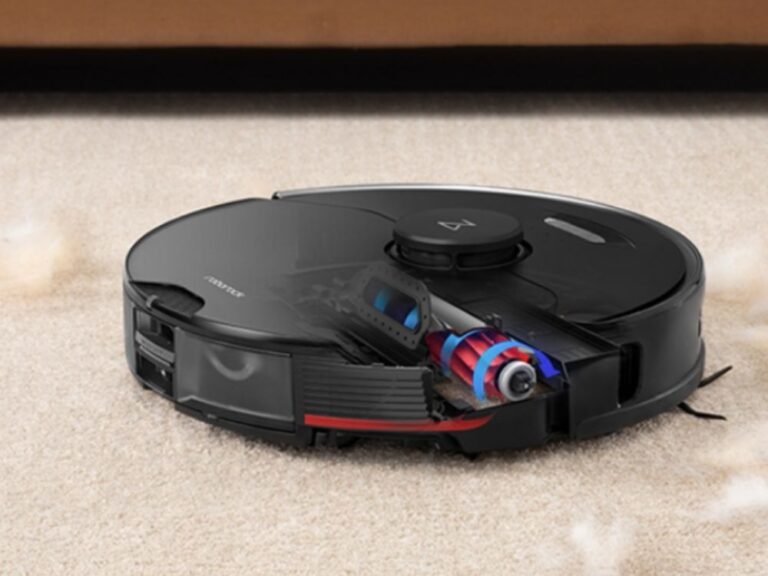
4.Pickup and brushes
The X1 keeps the standard bristled roller-brush which we saw on the T9+, while the S7 MaxV stays true to the all-rubber brush. On the whole, the rubber brush gets less hair tangled around it, but it might be sliiiightly less efficient at picking up long hair because of the lack of bristles and floating main brush cover. The beauty of the S7 MaxV’s all rubber brush is how all long hair simply winds around the ends of the brush which makes it extremely easy to slip off the brush (as opposed to cutting it away from the X1’s bristled brush).
The S7 MaxV also has one rubber side-brush, while the X1 has two standard bristled ones.

5. Navigation
Both robots use LiDAR for positional navigation. They’re both methodical and gentle on walls and furniture. Their mapping capabilities are pretty amazing as well.
I’m very happy to report that BOTH ROBOTS NOW USE QUICK MAPPING TO MAP YOUR HOUSE. For anyone who has had a robot before, you will more than empathise with the painful process of mapping out your home. The X1 is the quickest robot I have tested but again, the S7 MaxV is very close. When you engage the “quick mapping” function, you watch the robots pop into each room, take a quick scan and leave – it’s mesmerising.
Both have virtual barriers, no-mop zones and 3D mapping. The S7 MaxV also has a “grid mapping” (on iPhones 12 and later) – jury is out on whether this is a gimmick or not but I thought it was a fun feature.
6. Mopping
The truth is that most hybrid vac+mops simply drag a wet mopping attachment around. This is useful for maintenance cleaning but doesn’t lift more stubborn spills that have been there a while. I’m glad to say that the X1 and the S7 MaxV both have very “active” and pressurised mops attached to the robot. Both also have adjustable water flow rates.
The X1 mop possess two rotating mopping pads, famously called the “Turbo 2.0 Rotating Mopping System”. The S7 MaxV uses “sonic, vibration mopping” – which supposedly sends 3000 vibrations per minute through the mop. Those stains don’t stand a chance. Basically, the X1 mopping pads will rotate and scrub spills and stains it comes across wheras the S7 MaxV mopping pad vibrates – the movements are much smaller and faster.
Have a look at our videos to watch both models mop in real time – we were pleased to note they both handled the sticky soy sauce extremely well – something you definitely want to see when you’re paying circa 3K for a robot.
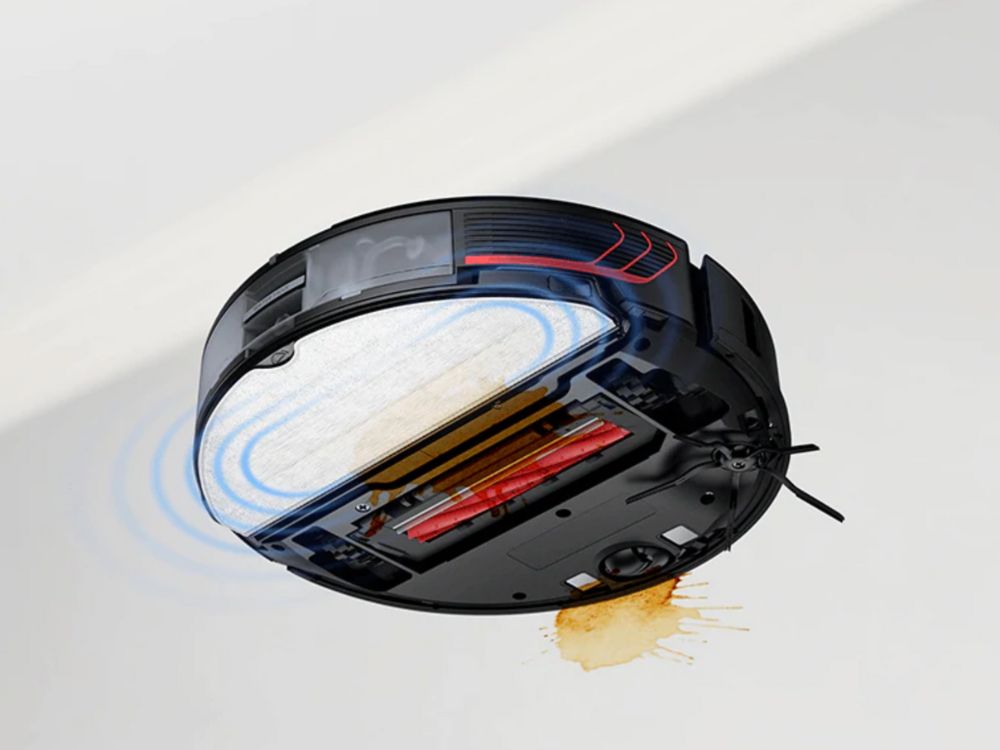
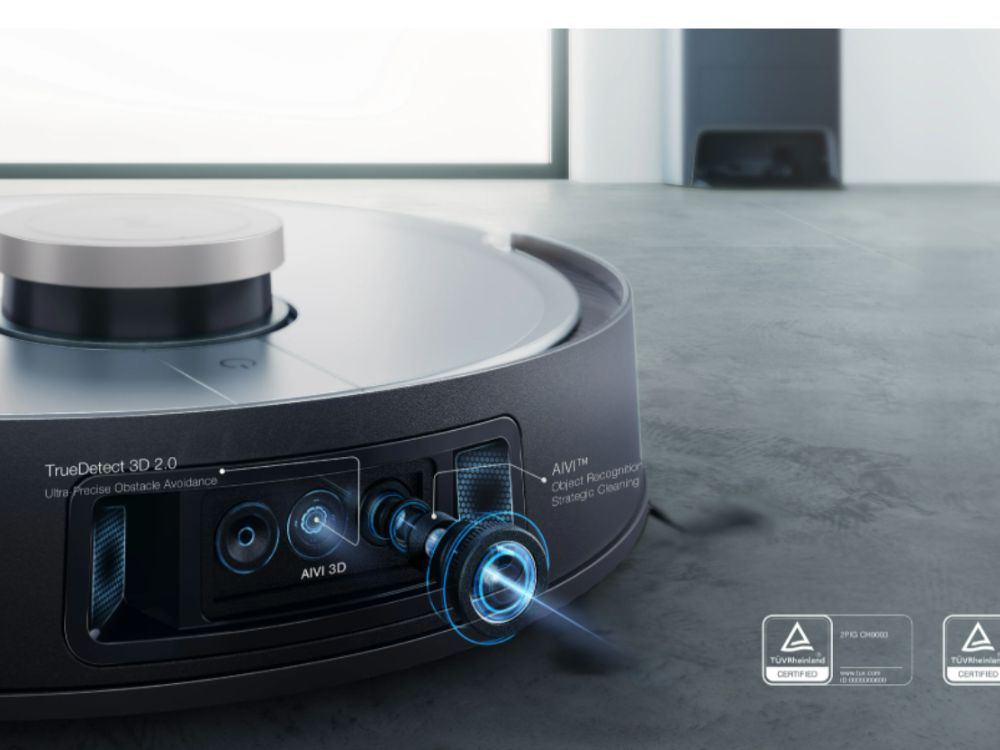
7. Obstacle avoidance
Both robots use a secondary laser system on the front to detect items on the floor, below the line of sight of the main LiDAR. Ecovacs call this TrueDetect 3D 2.0 and Roborock call it Reactive AI. Both robots are constantly identifying objects and matching them with an image library stored in the cloud. It’s particularly useful to help it navigate USB cables and socks (or pet messes…) that are left on the floor without getting them stuck in the brush. It’s important to note that it isn’t 100% reliable and it’s still best practice to pick up before sending it out to work. The S7 MaxV has a cute little feature that sends you a notification when it thinks it has come across a “hazard”. It will send you a picture of your socks or a cable so you can remember to pick it up in time for the next clean.
8. Raising the mop
This feature is still the major advantage of the Roborock S7 MaxV Ultra. Like its predecessor, the S7 range remains the only robot that can raise its mop when it detects it is driving on carpet or rugs. If you’ve ever owned a robot you will immediately understand what this means. You see, other robot mops also use ultra-sonic sensors to detect carpet, however as the mop can’t be raised, it will simply avoid driving there as it would make a damp mess. If the majority of your flooring is hard, or you only have one area that needs mopping and you can find a place for the base, this is probably not an issue. However, many New Zealand homes will have a mixture of carpet and hard-floors. Any hard-floor that has carpet between it and the base location essentially becomes an island as the robot will not even transit across it with the mop attached. Carrying the robot back to base isn’t a huge deal, but it may be something people don’t always consider and not having to think about it at all is another level of convenience and automation.
The Roborock mop only raises 5mm when it detects carpet. As the sensors are on the front of the robot and the mop is on the back, it is quick enough to detect it and raise the mop. When I tested it on a bumpy white rug, it did still leave a slight dampness however there were no marks. It was totally effective in our tests on standard deep pile carpet.
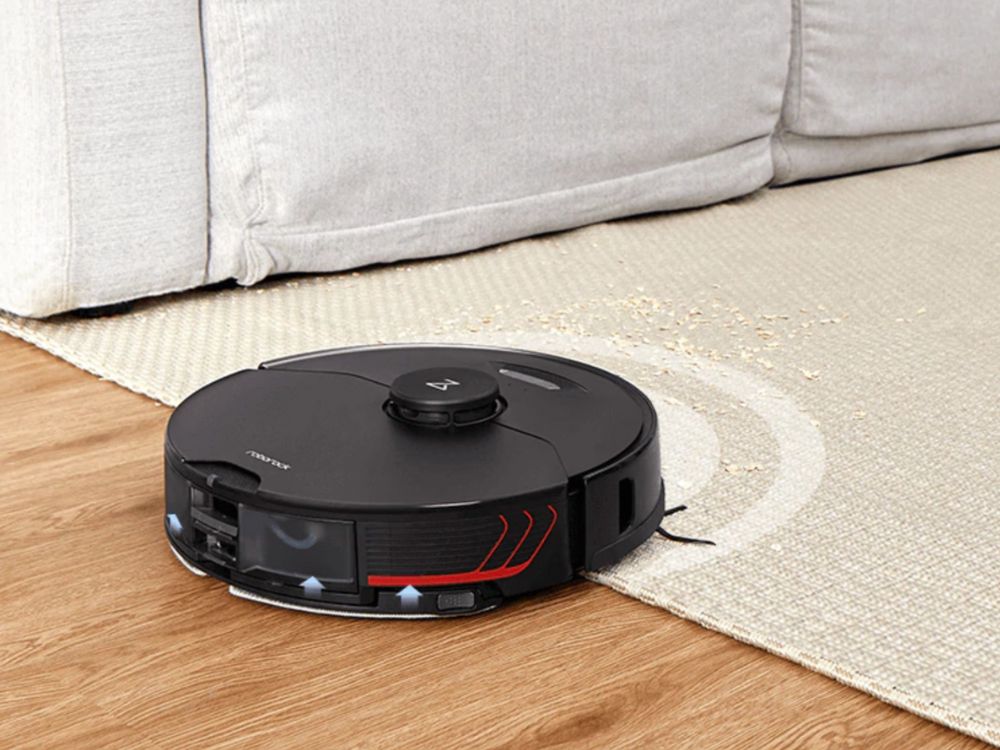
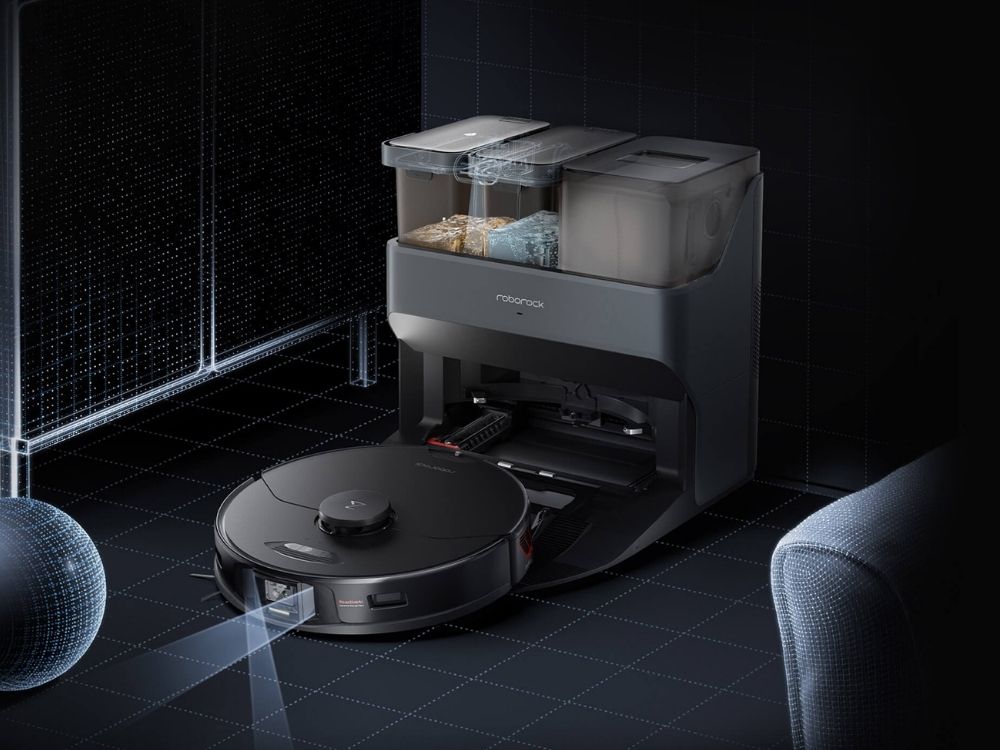
9. “Hello Yiko” and other features
The X1 has a major win as well – it uses an inbuilt voice assistant called Yiko. All you need to do is yell “Hey Yiko, clean the kitchen” and sit back to watch it the robot zoom off to the room you have mapped and labelled “kitchen”. So now, you no longer even have to take your phone out to clean up spills.
We have published a list of Yiko commands which are surprisingly helpful when taking that next step into home automation.
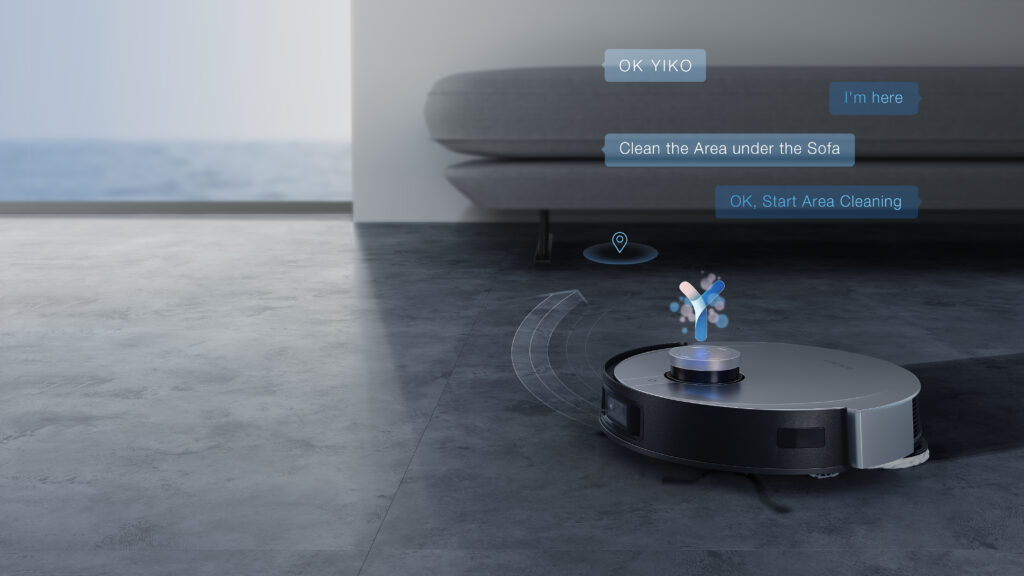
Roborock S7 MaxV Ultra | Ecovacs Deebot X1 Omni | |
|---|---|---|
Price | $2,699 NZD | $2,999 NZD |
Battery life | 180 mins | 175 mins |
Navigation type | LiDAR (ultra-accurate) | LiDAR (ultra-accurate) |
Cleaning Functions | Vacuum + Mop | Vacuum + Mop |
Suction power | 5,100 Pa | 5,000 Pa |
Roller-brush | Rubber | Bristled |
Side-brushes | One | Two |
Ultra-sonic carpet detection | Yes | Yes |
Active mopping | Vibrating | OZMO™ Turbo 2.0 rotating mops |
Raises mop on carpet | Yes | No |
Auto-empty included | Yes | Yes |
Virtual barriers | No-go & no-mop | No-go & no-mop |
Smart-home | Amazon Alexa, Apple Siri & Google Home | Amazon Alexa & Google Home |
Dust-bin bag size | 2.5L | 3L |
Auto-wash mop | Yes | Yes |
Water capacity | 300ml | 180ml |
Object Avoidance | Yes – Reactive AI | Yes – TrueDetect 3D 2.0 |
Summary and advice.
Overall, the Roborock S7 MaxV Ultra and the Ecovacs Deebot X1 Omni are both leading the robot game and extremely neck and neck. It all comes down to what is most suited to your home and what features you personally prioritise.
Personally, it comes down to how much I want the convenience of never having to carry the robot to mop (S7 MaxV) vs the sleek look and hair pickup-abiilty (X1). If I had a house with mostly hard floors / polished concrete and was primarily sending the robot out to mop, the X1 Omni would be my choice. If I had more or a mixture and wanted to vacuum and mop equally and frequently, maybe I’d then go with the S7 MaxV Ultra.

